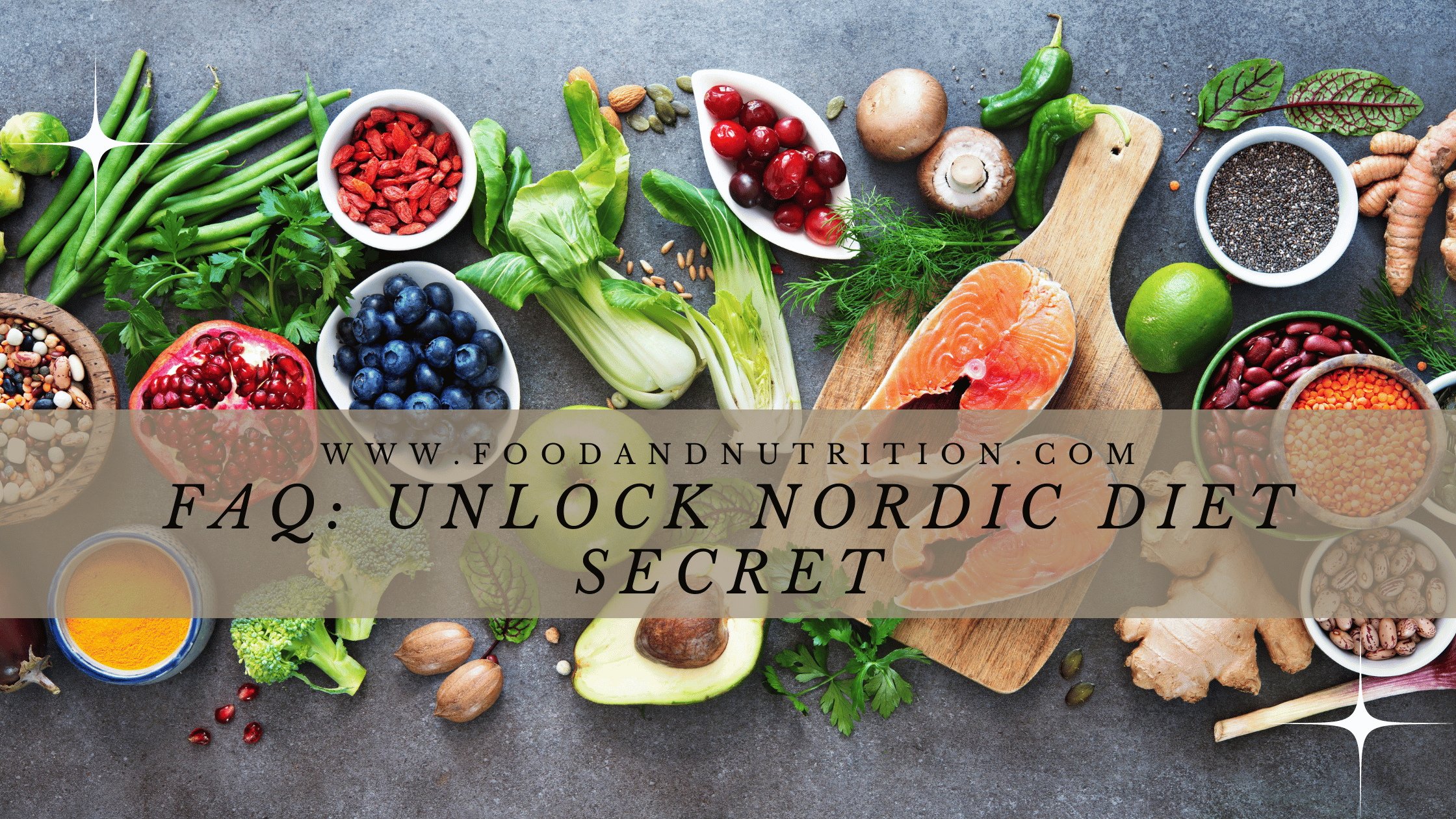FAQ: Unlock Nordic Diet Secret

Welcome to our comprehensive FAQ section focused on the Nordic Diet and its impact on heart health. The Nordic Diet, originating from the traditional eating habits of the Nordic countries, has garnered attention for its numerous health benefits, particularly in promoting heart health. This diet emphasizes natural, unprocessed foods, which include a rich variety of nutrients essential for maintaining a healthy heart. In this section, we will address some of the most frequently asked questions about the Nordic Diet. These include its basic principles, the specific ways it supports heart health, comparisons with other popular diets like the Mediterranean Diet, and practical advice for integrating this dietary approach into your daily life. Whether you are looking to improve your heart health, manage weight, or simply adopt a more sustainable eating pattern, this FAQ will provide valuable insights and guidance on the Nordic Diet.
Q1: What is the Nordic Diet?
A: The Nordic Diet is a way of eating based on traditional foods found in the Nordic countries. It emphasizes whole, unprocessed foods, including fatty fish, whole grains, root vegetables, berries, and healthy fats. This diet is known for its health benefits, particularly for heart health, and its focus on sustainability and local produce.
Q2: How does the Nordic Diet benefit heart health?
A: The Nordic Diet benefits heart health in several ways. The high omega-3 content from fatty fish helps reduce inflammation and regulate heart rhythm. Whole grains and fiber-rich foods lower bad cholesterol and prevent atherosclerosis. Additionally, the antioxidants in berries protect against oxidative stress, which is a risk factor for heart disease.
Q3: Is the Nordic Diet suitable for weight loss?
A: While the primary focus of the Nordic Diet is not weight loss, its emphasis on whole, unprocessed foods and balanced nutrition can contribute to a healthy weight. High fiber content in whole grains and vegetables can promote satiety and help control appetite, aiding in weight management.
Q4: Can the Nordic Diet help with high blood pressure?
A: Yes, the Nordic Diet can be beneficial for individuals with high blood pressure. Foods rich in potassium, like root vegetables, help regulate blood pressure. The diet’s low sodium and high fiber content also contribute to maintaining healthy blood pressure levels.
Q5: Are there any challenges to adopting the Nordic Diet?
A: Adopting the Nordic Diet may require some adjustments, particularly if you’re not used to eating certain types of fish or whole grains. The availability of specific Nordic ingredients might vary depending on your location. However, many of the diet’s principles, like eating whole, unprocessed foods and plenty of fish, fruits, and vegetables, can be adapted to local ingredients.
Q6: How does the Nordic Diet compare to the Mediterranean Diet?
A: Both diets are heart-healthy, focusing on whole foods and healthy fats, but they differ in some food choices. The Nordic Diet includes more root vegetables and fatty fish, while the Mediterranean Diet is higher in olive oil, nuts, and legumes. Both diets emphasize fruits, vegetables, whole grains, and lean proteins.
Q7: Can I follow the Nordic Diet if I’m vegetarian or vegan?
A: Yes, the Nordic Diet can be adapted for vegetarian or vegan lifestyles. While traditionally it includes fish, you can substitute with plant-based sources of omega-3 fatty acids, like flaxseeds and walnuts, and focus on whole grains, fruits, vegetables, and legumes.
Q8: Are there any specific foods or nutrients I should focus on for heart health in the Nordic Diet?
A: For heart health, focus on foods rich in omega-3 fatty acids (like fatty fish), high-fiber whole grains, berries rich in antioxidants, and healthy fats from nuts, seeds, and rapeseed oil. These components are key to reducing inflammation, managing cholesterol, and maintaining overall heart health.
Q9: How can I start incorporating the Nordic Diet into my daily routine?
A: Start by gradually introducing elements of the diet into your meals. Include more fatty fish like salmon or mackerel, replace refined grains with whole grains like oats and barley, and add a variety of berries to your diet. Experiment with root vegetables and incorporate healthy fats like nuts and seeds into your snacks and meals.
Q10: Is the Nordic Diet sustainable and environmentally friendly?
A: Yes, one of the hallmarks of the Nordic Diet is its focus on sustainability and environmental responsibility. It encourages locally sourced, seasonal foods, which reduces the carbon footprint associated with food transport and supports local agriculture. The diet also emphasizes organic produce and sustainable fishing practices.
- Eating Your Way to Healthy Blood Pressure: A Guide to Lowering Hypertension
- Unlock the Flavor: The Ultimate Guide to Cooking Salts
- Hydration Mastery for Athletes: Track & Field Performance Boost
- Salt & Heart Health: Unveiling the Truth Behind Sodium Intake
- Boost Immunity with Nordic Diet: A Guide for Healthier Living
- Tackling Obesity: Practical Strategies for Healthier Lives